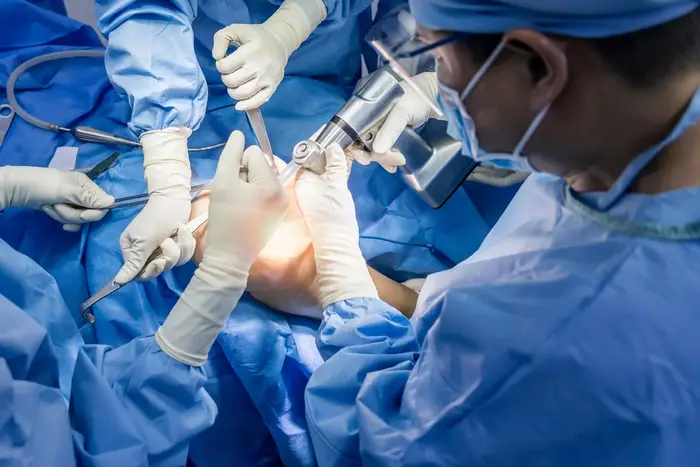Introduction
Knee replacement surgery (medically termed total knee arthroplasty) isn’t just a procedure—it’s a transformative journey for those battling debilitating arthritis, injury-related damage, or chronic mobility loss. Over 600,000 Americans undergo this surgery annually, with a 95% success rate for knee pain relief and restored function, according to the American Academy of Orthopaedic Surgeons (AAOS). Whether you’re weeks away from surgery or exploring long-term solutions, this guide merges surgeon expertise, peer-reviewed research, and real patient experiences to answer your biggest questions—How do I prepare? What’s recovery really like? Can I hike or garden again? Let’s dive in.
Section 1: Preparing for Knee Replacement Surgery
1.1 Pre-Surgery Consultations: What You Must Ask
Your journey begins with choosing the right orthopedic surgeon. Dr. Emily Tran, a Mayo Clinic-trained joint replacement specialist, emphasizes: “Patients who ask detailed questions pre-surgery report higher satisfaction post-op.” Key questions include:
- “What’s your infection rate?” (The national average is 1–2%, per AAOS.)
- “Do you use robotic-assisted technology?” (Linked to 20% faster rehab, 2023 Johns Hopkins study.)
- “What’s my implant material?” (Cobalt-chrome and polyethylene are most common.)
Pro Tip: Bring a family member to appointments—they’ll help remember details and provide emotional support.
1.2 Physical Prep: Strengthen Before Surgery
Prehab isn’t optional—it’s critical. A 2021 Journal of Orthopaedic Surgery study found patients who did pre-surgery exercises regained walking ability 30% faster. Try this 4-week plan:
- Weeks 1–2: Chair squats (3 sets of 10 daily) + calf stretches.
- Weeks 3–4: Resistance band leg presses (focus on quads/hamstrings).
Bonus: Aquatic therapy reduces joint stress while building strength.
1.3 Mental Prep: Tackling Anxiety & Logistics
- Anxiety Management: Cognitive Behavioral Therapy (CBT) apps like Sanvello reduce pre-surgery stress by 40%, per Harvard Health.
- Home Setup:
- Move essentials to the first floor (toiletries, medications).
- Rent a recliner—sleeping flat strains the knee initially.
- Medications: Stop NSAIDs (Advil, Aleve) 14 days pre-op to avoid bleeding risks.

Section 2: Surgery Day & Immediate Recovery
2.1 Robotic vs. Traditional Surgery: Which Is Better?
- Robotic-Assisted TKA: A camera-guided arm removes damaged tissue with 0.5mm precision. Ideal for complex cases.
- Traditional TKA: Proven track record but may require longer rehab.
- Partial Replacement: Only 10% of patients qualify due to strict damage criteria.
Patient Example: Linda, 58, chose robotic surgery for her active lifestyle: “I was biking lightly by Week 8.”
2.2 The First 72 Hours: Pain, Swelling & Early Wins
- Pain Protocol:
- Day 1: IV opioids (hydromorphone) for 12–24 hours.
- Day 2: Transition to oral acetaminophen (3,000mg/day max).
- Swelling Hacks:
- Compression socks + 20-minute ice sessions every 2 hours.
- Elevate above heart level—use a foam wedge pillow ($25 on Amazon).
- Mobility Milestone: Walk 10–15 steps with a walker Day 1 to boost circulation.
Warning Sign: Sudden calf pain or redness? Alert your nurse—it could signal a blood clot.
Section 3: Weeks 1–6: Building Strength & Avoiding Setbacks
3.1 Physical Therapy: Your Roadmap to Independence
Your PT plan will include:
- Heel Slides (Day 3+): Sit upright, slowly slide heel toward buttocks. Goal: 90° bend by Week 2.
- Straight Leg Raises (Week 2+): Strengthen quads without straining the implant.
Avoid: Overexertion—stop if pain exceeds 4/10.
3.2 Sleep & Nutrition: The Recovery Game-Changers
- Sleep Position: Use a knee immobilizer or pillow between legs to prevent twisting.
- Anti-Inflammatory Diet:
- Turmeric + Black Pepper: Reduces inflammation (1 tsp daily in smoothies).
- Collagen Peptides: Boosts tendon repair (add to morning oatmeal).

Section 4: Months 2–6: Regaining Your Life
4.1 Advanced Exercises & Activity Milestones
- Weeks 6–12:
- Stationary bike (no resistance) 15 mins/day.
- Water walking in a pool.
- Months 3–6:
- Gardening: Use a kneeler bench ($40) to protect the joint.
- Golf: Opt for a cart initially; avoid twisting swings.
Surgeon Insight: Dr. Tran advises, “Listen to your body—progress slowly to avoid tendinitis.”
4.2 Emotional Health: Beating Post-Op Blues
- Red Flags: Persistent sadness, loss of appetite, or sleep issues beyond Week 4 may signal depression.
- Solutions:
- Teletherapy: Platforms like BetterHelp offer flexible sessions.
- Support Groups: The Arthritis Foundation’s online communities host live chats.
Section 5: Long-Term Success: Implant Care & Revision Risks
5.1 Making Your Implant Last
- Avoid: High-impact sports (running, basketball)—opt for swimming or cycling.
- Weight Management: Every 10 lbs lost reduces knee stress by 40 lbs per step.
Stats: 85% of TKAs last 20+ years with proper care (2022 AAOS Report).
5.2 Revision Surgery: When Is It Needed?
- Causes: Infection (1.5% of cases), implant loosening (3%), or trauma.
- Prevention: Annual check-ups + low-impact exercise.

Section 6: FAQs Answered by Surgeons
- “How soon can I fly post-surgery?”
- Wait 6–8 weeks to avoid blood clots; request an aisle seat for stretches.
- “Can I kneel after TKA?”
- Yes, but use a padded cushion—60% of patients report mild discomfort.
- “Will airport scanners detect my implant?”
- Inform TSA agents; implants rarely trigger alarms.
Section 7: Real Stories: From Pain to Victory
- Mike, 70: Completed a 5K walk 9 months post-op using a gradual training plan.
- Dr. Lisa Nguyen’s Tip: “Use a fitness tracker—aim for 500+ daily steps Week 1, increasing 10% weekly.”
Conclusion
Knee replacement surgery isn’t a quick fix—it’s a commitment to reclaiming your independence. By prioritizing prehab, adhering to PT, and embracing patience, you’ll unlock a life with less pain and more possibilities. Always partner with your surgeon for personalized advice, and remember: every small step forward is a victory.
